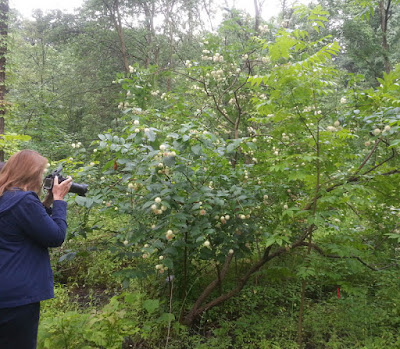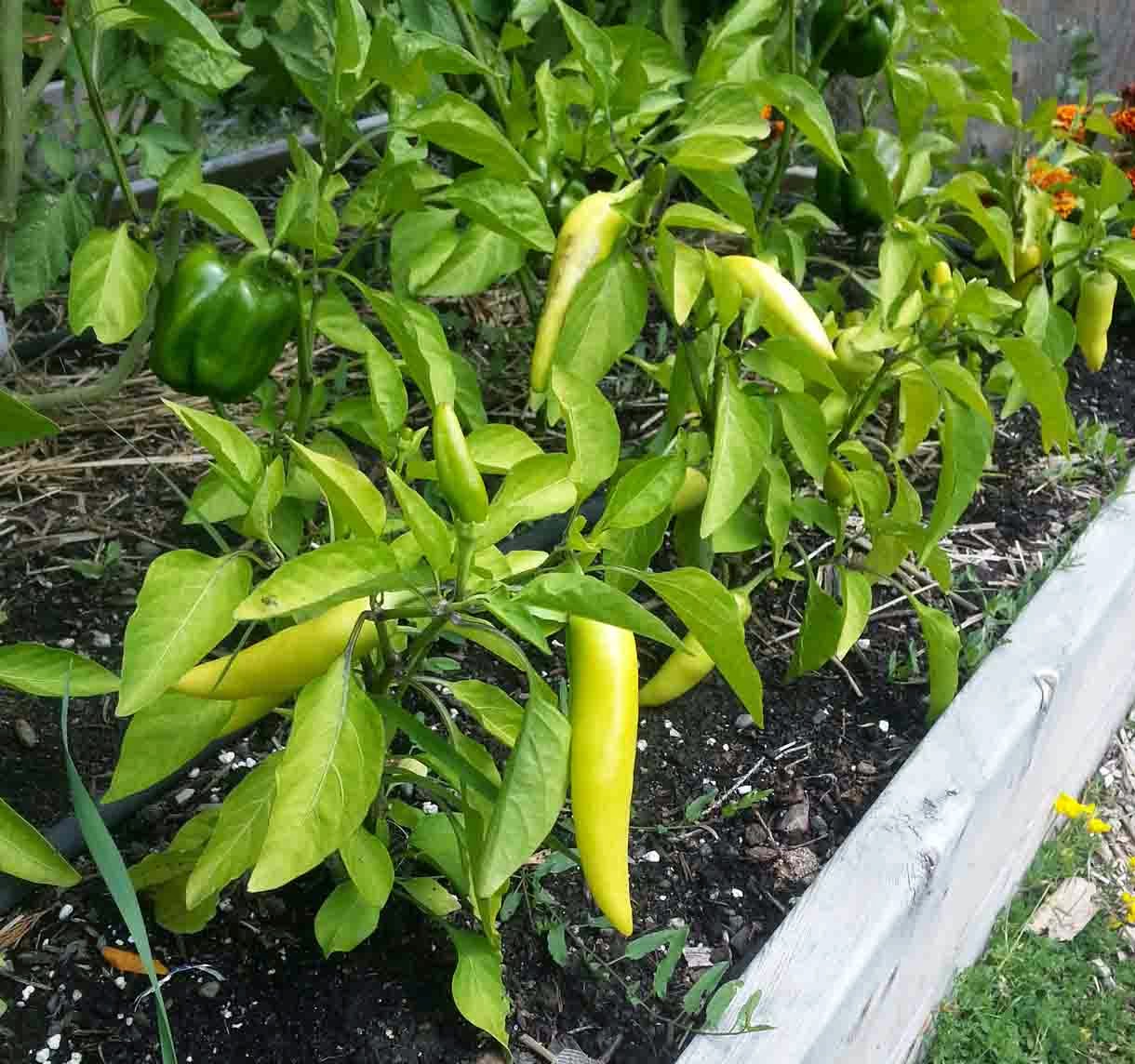Eloise Butler Wildflower Garden and Bird Sanctuary
Minneapolis GBF - Day 1 - Garden #1
After a great sleep in a very comfortable king sized bed, I had pretty much recovered from the travel fiascos of the previous day and was raring to go, bright and early.
The first stop on Day 1 of the Minneapolis Fling was the Eloise Butler Wildflower Garden and Bird Sanctuary, the oldest public wildflower garden in the United States.
Eloise Butler was a teacher in the late 19th, early 20th century who was passionate about nature. A quote on one of the plaques at the garden perfectly illustrates her love of nature: “…a bit of natural growth is a source of greater delight to the true nature lover than the most beautiful and most highly cultivated garden” –Eloise Butler.
She, together with several other teachers, were the force behind the creation of the “The Wildflower Garden” in 1907, a 3 acre natural botanic garden. During her time as curator, the garden was expanded to 23 acres and tens of thousands of native plants were added. Eloise died in the Garden in 1933, at the age of 81. I have a feeling there is no place she would have rather been in those final moments.
True to her mission, the garden that now bears her name showcases plants in their natural setting.
The garden is open from mid-April through to mid-October & there is no admission fee.
For the protection of both plant and creature, the dos and don’ts when enjoying the garden are clearly outlined on a map located at the entrance, including a special reminder for us photographers since we do sometimes get a bit too enthusiastic when taking photographs :)
 |
Instead of walking through wide open, grassy expanses surrounded by ornamental borders, this garden is enjoyed while strolling nature trails with immaculately groomed mulch paths:
 |
And boardwalks:
 |
One interesting tidbit that our tour guide gave us was that Eloise would often collect plants during her train travels. When the train would stop unexpectedly due to breakdowns, etc. (which was apparently not all that uncommon), she would hop off, search for interesting plants, and bring them back to the wildflower garden.
The garden contained a diverse range of ferns:
 |
 |
One of the plants that really caught my (and everyone else's) eye was the buttonbush:
 |
Buttonbush (Cephalanthus occidentalis)
|
 |
Buttonbush close-up
|
 |
A bit of further research, however, revealed that it has now been reclassified into it's own special group: Asparagaceae...not very original, is it?
I found this to be the most fascinating bit of our walk – take a look at this gorgeous expanse of wildflowers:
 |
Wildflower Savannah
|
Some Queen of the Meadow, a pre-cursor to aspirin, was spotted:
 |
| Queen of the Meadow (Filipendula ulmaria) |
We noticed many feeders as we walked the paths – this is, after all, a bird sanctuary too:
 |
The squirrel baffle tells me I'm not the only one with squirrel issues!
|
 |
Wild turkey having an impromptu meal near the feeders
|
 |
Blue Wild Indigo
|
 |
The juices of the plant turn purple when exposed to air and can be used to create a dye (as was done by the early settlers), although it is apparently not as good as “True Indigo” (Indigofera tinctoria).
Many other plants were spotted that are prevalent in Minnesota's gardens, both public and private. Of course, I didn’t realize this until after the fact, once I noticed them popping up in many of the gardens we toured:
 |
| Black Eyed Susan |
 |
| Monarda |
 |
| Turkscap Lily (Lilium superbum) |
 |
Butterfly Weed (Asclepias tuberosa)
|
 |
Joe Pye weed (Eutrochium)
|
One aspect of a garden that I’m always drawn to is the seating area – a place to sit, rest and peacefully enjoy the beauty that surrounds you.
 |
Notice the strategically placed birdbath
|




Nice post Margaret. I really liked that garden a lot. There was a certain peace I felt while wandering through those pathways. It was so peaceful wandering through those pathways.
ReplyDeleteThanks Janet - this garden was definitely one of my favourites. If I lived close by, I would likely wander those trails quite often, both for their beauty and sense of tranquility.
DeleteThanks for the reminder, Margaret. I gleaned a few facts that I didn't hear (story of my life) as we were touring. Also, Eupatorium is now Eutrochium? Honestly, I find taxonomists to be taxing -- I just can't keep up.
ReplyDeleteThere's just so much to take in, isn't there? I was trying to take notes using my phone, but ended up missing a lot...a notepad and pen are on my supply list next time!
DeleteAnd I totally agree with you...I think this trend of constantly revising botanical names is a bit maddening.
What a lovely garden and the quote on the plaque is so true. Fancy her dying in the garden, but I think you're right, when you've invested so much of yourself in a garden, there must be no other place you'd rather spend the last moments of your life.
ReplyDeleteVery true. She was such a fascinating person. If I was asked who, present or past, would you like to meet & have a chat with, I'm pretty sure that Eloise would be on that list.
DeleteWhat a wonderful post, Margaret! The Eloise Butler Wildflower Garden was a great place to start, wasn't it? It was great to see all those native plants thriving and looking wonderful in a natural setting. Thanks for the link--the Jewelweed is still blooming, and the hummingbirds are loving it! I have a feeling I'll have quite a few more patches of it next year because the seeds really travel!
ReplyDeleteThanks Beth! I'm a huge fan of nature trails and there was just so much to see and discover along this one - I went on the "fast" tour and kept falling behind as it was so easy to get distracted :)
DeleteThat's wonderful that your Jewelweed is still in flower. With my love of all things orange in the garden, I really should get a patch going in one of the beds.
Those ferns really caught my eye--especially the center photo one. Odd. Intriguing. I love them!
ReplyDeleteLooks like a very relaxing garden. And heck, who doesn't love a boardwalk!
I had never seen ferns like that either - I really want to eventually incorporate some ferns into the shady areas of my garden, so am always on the lookout.
DeleteIt was such a wonderful garden - the perfect place for quiet contemplation as you stroll (not that there was much of that this time as us bloggers are a rather excitable bunch, especially when you throw us all together :).
Like Sue I was fascinated by the odd looking fern. Man of Eloise's wild flowers are cultivated ones in our garden.
ReplyDeleteSame here - I often feel that the main difference between what is considered wild and what is cultivated rests in how many volunteers you pull out!
DeleteI will have to check the voice recognition more carefully it should have said most of these. Not man of Eloise!
DeleteHa, ha...I figured that :)
DeleteGreat post - you noticed a lot of things that I missed. We go to the Twin Cities a couple times per year, I need to revisit this wildflower preserve.
ReplyDeleteThanks Jason - and lucky you! There were several gardens we went to during the fling that I would definitely want to revisit if we ever found ourselves in Minnesota again.
DeleteAh this post brought back lovely memories of that wildflower garden. I love that they use a 'controlled burn' to rejuvenate some of the gardens. I burn the grasses each year and it is spectacular. Also, it is much easier than taking the saw to them.
ReplyDeleteThank you Layanee - burning your grasses would definitely be a lot easier than chopping them down. I didn't even consider that you could do that in a home garden. I'm sure that a LOT of precautions are necessary...don't know if I would be brave enough to try it.
Delete